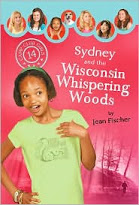
One of the best ways to polish your writing skills is to practice different forms of writing. Use your journal to complete this five-week mini-course. If you tackle it seriously, the result will be writing samples worthy of a place in your portfolio. Remember: What you write each week doesn’t have to be long, but it should be your best writing.
Weekly Assignments:
Week 1 – Narrative Writing
Choose one:
- Personal narrative: Write a true story about your own life.
- Fictional narrative: Write a fictional story.
- Biographical narrative: Write a true story about someone else’s life.
Week 2 – Expository Writing
Choose one:
- Compare-contrast essay: Write a short essay to show the similarities and differences between two subjects.
- How-to-essay: Write an essay that explains how to do something.
- Informative essay: Write an essay to inform or educate readers on a specific topic.
Week 3: Persuasive Writing
Choose one:
- Opinion essay: Choose a controversial topic; then persuade readers to agree with your point of view by supporting it with strong reasons and examples.
- Problem-solution essay: Present a problem and your solution; write to persuade readers that your solution will work.
- Pro-con essay: Persuade readers to agree with your opinion by presenting the pros and cons of a controversial issue.
Week 4: Letter Writing
Choose one:
- Write a query letter to an editor or agent; sell your idea.
- Write a cover letter for a freelance writing opportunity that you found online.
- Craft a polite, concise application letter stating why you and your project are the ideal recipients for a writer’s grant.
Week 5: Creative Writing
Choose one:
- Write a short play.
- Write a poem. This link will provide you with a list of different forms of poetry. Choose one form for this week’s assignment.
Daily Tasks:
Day 1: Prewrite.
Before you begin to write, gather information about your topic. If you are unfamiliar with the writing form, do some digging online. TheWritingSite.org is a good place to start.
Days 2 and 3: Write.
Don’t worry about writing right, just write! Get your ideas down on paper.
Day 4: Revise your content.
Read what you’ve written and tighten up the content. Don’t worry yet about structural or mechanical problems.
Day 5: Edit for accuracy.
Clean and polish! Fix any grammar, punctuation, spelling and sentence errors.
 Ask yourself this question: How can I use this form of writing in my career as a professional writer?
Ask yourself this question: How can I use this form of writing in my career as a professional writer?
(Fiction writers, think about how Expository and Persuasive forms can help you with structuring a plot. Non-Fiction writers, think about how forms of Fiction writing can aid your writing style.)
Congratulations! You’ve created a polished writing sample for your portfolio.




























